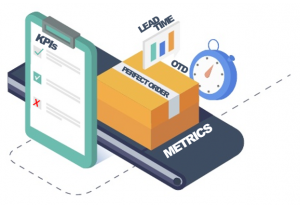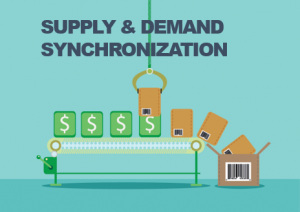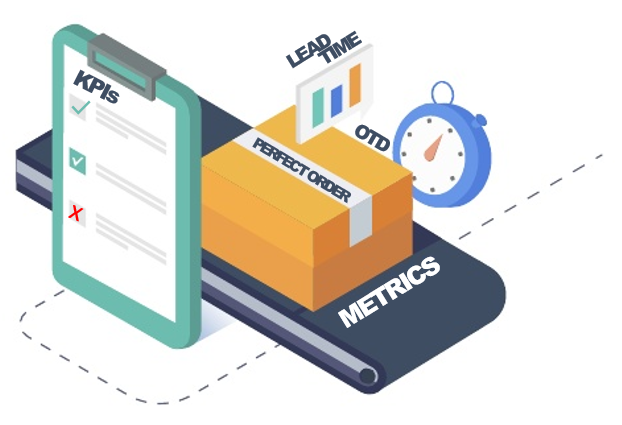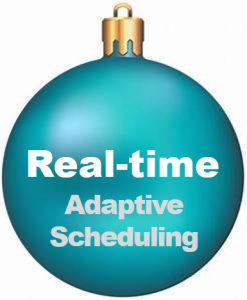 It seems not a week goes by when I don’t hear from someone in manufacturing: “You can’t manage what you can’t measure”. Of course, there is a lot of truth to that statement, but as someone who spends all day, every day, helping manufacturers gather real-time data for better operational performance, I believe the statement is incomplete. The axiom should be: “You can’t manage what you can’t measure consistently and accurately.”
It seems not a week goes by when I don’t hear from someone in manufacturing: “You can’t manage what you can’t measure”. Of course, there is a lot of truth to that statement, but as someone who spends all day, every day, helping manufacturers gather real-time data for better operational performance, I believe the statement is incomplete. The axiom should be: “You can’t manage what you can’t measure consistently and accurately.”
Take the exa mple of On Time Delivery (OTD). In any manufacturing environment, delivering what you promised when you promised is good business, so measuring this metric makes sense. However, as simple as this metric should be to measure, it can get complicated. Consider this scenario:
mple of On Time Delivery (OTD). In any manufacturing environment, delivering what you promised when you promised is good business, so measuring this metric makes sense. However, as simple as this metric should be to measure, it can get complicated. Consider this scenario:
The Challenge with Measuring On-Time Delivery
Bob in sales promises a customer that their order will be shipped by the 15th of the month. The factory comes back and says, given the current production load, there is no way we can get the order out the door until the 25th. The order isn’t big enough, nor has the customer done enough business with the company, to warrant upending the production schedule to meet the promised delivery date. As a result, the factory’s understanding of the promise date is the 25th, while Bob’s (and the customer’s) is the 15th. Who’s right?
Let’s say the customer’s order history does warrant upending the production schedule, but that throws off the delivery date for several other orders. These customers are accommodating, so despite the chaos in the factory, the change doesn’t result in any lasting harm. If the factory then delivers these orders by the new promised delivery date, are they still “on time?” What if the customers w hose orders were affected hadn’t been so accommodating?
hose orders were affected hadn’t been so accommodating?
Later that month, the factory manager is called on the carpet by the CEO because according to his monthly reports, the factory’s OTD rate is less than 50%! (The report IT creates for the CEO compares the original promised date against the actual delivery date.) The factory manager pulls out a spreadsheet showing the production schedule against actual delivery. According to his figures, the factory’s OTD rate is 95%. Not perfect, but darn good. Is the factory manager’s position defensible?
Making Manufacturing Metrics Meaningful Again
Let’s take a look at a few of the challenges presented in the above scenario and how Synchrono can help resolve them.
#1 One version of the truth – The factory manager’s spreadsheet is the type of “red flag” we look for when clients call us in to ask how they can improve operations. Spreadsheets in manufacturing almost always mean that people are working from different versions of reality. Not only is there a question of where the data comes from, but studies also show that a good portion of the spreadsheets used in business contain errors. Creating a common definition for key metrics and then letting a system, such as SyncView from Synchrono, serve that KPI up in a dashboard helps ensure everyone is working from the same version of the truth.
Related Post – It’s Time: Manufacturers Need to Cut Ties With MRP and Spreadsheets
#2 Bridging the Divide Between Production and Sales – In many facilities, the last thing the production scheduler wants to do is take time out of their day to negotiate with sales. Every call could mean a change to their carefully crafted schedule. For their part, sales is more interested in closing business. If they’re promising unrealistic dates, well, they can always ask for forgiveness later.
 SyncManufacturing considers all resources when calculating capacity: materials, people, processes and equipment – and delivers a “capable to promise” date (CTPD) that the factory can meet given current supply and workload. Many Synchrono customers give sales access to this information during the sales process, eliminating unrealistic promised delivery dates or the need for sales to call the factory. In the example above, Bob would have been given a CTPD that he could reliably provide to his customer, making the issue of conflicting OTD metrics moot. Just as important, providing Bob with a CTPD prevents Bob – and the organization – from making a local decision that could have enterprise-wide impact. Along with CTPD verification, many SyncManufacturing software customers put a process in place where they talk through the options available when a customer request date cannot be met. This way, the organization can have a systematic discussion of what can be done, rather than making a decision in isolation that could have wide-spread ramifications.
SyncManufacturing considers all resources when calculating capacity: materials, people, processes and equipment – and delivers a “capable to promise” date (CTPD) that the factory can meet given current supply and workload. Many Synchrono customers give sales access to this information during the sales process, eliminating unrealistic promised delivery dates or the need for sales to call the factory. In the example above, Bob would have been given a CTPD that he could reliably provide to his customer, making the issue of conflicting OTD metrics moot. Just as important, providing Bob with a CTPD prevents Bob – and the organization – from making a local decision that could have enterprise-wide impact. Along with CTPD verification, many SyncManufacturing software customers put a process in place where they talk through the options available when a customer request date cannot be met. This way, the organization can have a systematic discussion of what can be done, rather than making a decision in isolation that could have wide-spread ramifications.
#3 Synchronizing Resources to Demand – Finally, many of our customers have dramatically increased their on-time delivery rate through the synchronization of resources to demand. At Rex Materials Group, on-time shipments went from 50% to 98% in one facility. I should also mention that Synchrono helped RMG lower lead times as well. Many orders that used to take three to four weeks can now be delivered in less than five days. Some products even have a 24-hour turnaround. Orders can be shipped the next day with no extra effort.
 If your manufacturing metrics need an overhaul, here are a few additional resources you might appreciate:
If your manufacturing metrics need an overhaul, here are a few additional resources you might appreciate:
White paper: Metrics That Drive Action







